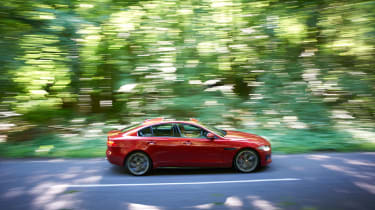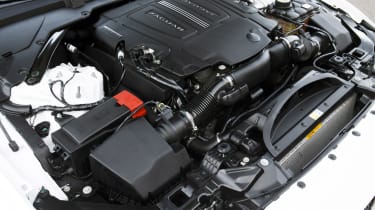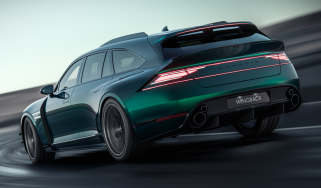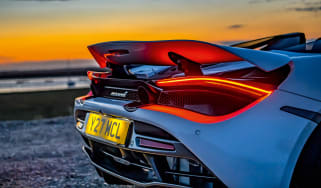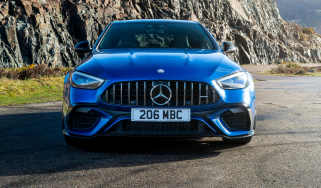Jaguar XE review - Jag's smallest saloon tackles BMW's 3-series head-on - Jaguar XE engine, gearbox and technical specs
XE's chassis is one of the best but lacks sparkle in other areas
If you're a fan of variety there's not much joy to be found in the XE's engine lineup. Aside from the loopy supercharged V8 of the Project 8, the XE's range comprises just 2-litre four-cylinder petrol and diesel units, from an entry-level 161bhp diesel to a 296bhp petrol. The previous 325bhp 3-litre supercharged petrol V6, once found in the XE S, is no more, a victim of changes made for WLTP regulations.
What's left falls under Jaguar's "Ingenium" tag and are broadly competitive with rivals in terms of output, torque, fuel economy and CO2 emissions, while a selection of power outputs means customers do have some choice when it comes to price, performance and frugality, even if they don't have much choice when it comes to refinement or driver appeal.
The 163bhp diesel develops its peak output at 4000rpm, and puts 280lb ft to the rear wheels from 1750rpm. Next up is a 177bhp variant of the same (still at 4000rpm) with a greater 317lb ft at 1750rpm, and above this is a 237bhp option with a useful 369lb ft produced even lower at 1500rpm. The latter is available only with all-wheel drive, while the 178bhp model has a choice of rear- and four-wheel drive.
More reviews
Jaguar had boasted that instead of the normal diesel clatter, the Ingenium diesel sounds more typical of the Coventry brand, with a ‘mellow growl’ at low revs, changing to an ‘edgy growl’ when you put your foot down. Sadly, that is far from the reality and the engines, no matter what the power output, are coarse and make a typical diesel rattle throughout the rev range.
The basic petrol model develops 197bhp at 5500rpm and 320Nm of torque from just 1200rpm, putting its power down through the rear wheels alone. The 247bhp (at 5500rpm) model is also rear-wheel drive only, and makes 269lb ft at 1200rpm. Move up to the 296bhp Ingenium unit (the same output as that of the four-cylinder F-type) and the XE is now four-wheel drive, sharing 295lb ft from 1200rpm among its four wheels.
Like the diesel, it's far from a classic example of a four-cylinder, though refinement is improving over time. The XE range is really hurting for something like the old V6 though – all its German rivals have at least six-cylinder options available in their lineups.
Jaguar still offers a manual transmission with the XE, but only in the 163bhp and 177bhp diesels. Those also get an eight-speed ZF automatic option, which is otherwise standard across the entire XE range.
The manual isn’t particularly pleasant; the action is clunky and rubbery while the gate is obtrusive. So, uncharacteristically for evo, we’d choose the auto option. However, there is one benefit of the manual transmission, it does offer a greater sense of connection to the drivetrain that the auto simply can’t.
The auto's mapping has improved over time though, hunting less than it used to and offering crisp changes and fairly consistent responses to flicks of the gearchange paddles. Left to its own devices it's also smooth and seems to work well with the petrol engine in particular.
One of Jaguar's current USPs is its aluminium architecture, and in the XE it's claimed to be the brand's stiffest saloon structure yet. The use of aluminium hasn't had a great effect on reducing weight – at its lightest the 1450kg diesel XE is still 20kg more than a steel-bodied Audi A4 TDI – but the structure does feel admirably solid.
Front suspension is a theoretically ideal double-wishbone setup based on that of the F-type, and the rear is what Jaguar describes as an "integral link" setup. This variation of a multi-link suspension separates lateral and longitudinal forces, theoretically allowing the directional stiffness required for a precise chassis with compliance in the other plane for a smooth ride. Steering is electrically assisted.
